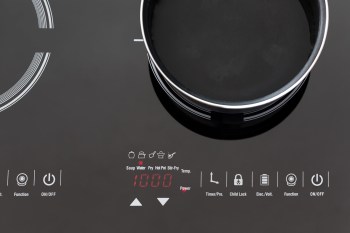A new study sheds light on the presence of microplastics in dairy products, delivering troubling results.
What's happening?
The research was published in the Science of Food journal in July and analyzed microplastics in milk, fresh cheese, yogurt, and ripened cheese. "Results confirm widespread microplastic contamination in dairy products and highlight the importance of further research into contamination pathways and strategies to reduce microplastic exposure in the dairy chain," the authors wrote.
The data showed that ripened cheese exhibited the highest microplastic concentrations, and milk exhibited the lowest. Cheese and yogurt products likely contain more microplastics because they are more processed.
Twenty-eight dairy product samples were analyzed, and microplastics were detected in 26. The microplastics found were predominantly polyethylene, polypropylene, and polystyrene. The scientists found beads and fibers, but most particles were irregular fragments.
Many of their findings aligned with other studies on microplastics in dairy products. One study referenced also found high levels of contamination in processed products such as butter and sour cream.
What do these results mean for people?
"The presence of microplastics in food has raised growing concern due to potential health risks," the study states. Research suggests that exposure to microplastics can impact human respiratory, immune, endocrine, reproductive, and digestive systems.
Save $10,000 on solar panels without even sharing your phone number Want to go solar but not sure who to trust? EnergySage has your back with free and transparent quotes from fully vetted providers that can help you save as much as $10k on installation. To get started, just answer a few questions about your home — no phone number required. Within a day or two, EnergySage will email you the best local options for your needs, and their expert advisers can help you compare quotes and pick a winner. |
Ingesting microplastics can cause inflammation and irritation of the gastrointestinal tract as well as abdominal pain, changes in bowel habits, and bloating. Microplastics can disrupt the gut's microbiome, leading to a range of health problems.
Microplastics in water, air, and soil also endanger countless species. A recent study estimated that sea turtles might carry up to 10 ping pong balls' worth of microplastics inside them. Butchers in Kenya discovered that one cow had eaten over 75 pounds of plastic.
Every species is essential in its ecosystem. Decreased populations or extinction due to health problems from microplastics disrupt this delicate balance, leading to a detrimental domino effect.
Without biodiversity, diseases spread more quickly, extreme weather becomes more frequent, and food and water supplies are threatened. People, animals, and plants are affected by microplastics, so exploring ways to limit their prevalence can help create a cooler, cleaner future for every species.
|
Do you worry about having toxic forever chemicals in your home?
Click your choice to see results and speak your mind. |
What's being done to reduce microplastics in food?
Businesses should focus on sustainable packaging and frequently test for microplastics. This can help them reduce the particles in their products and identify manufacturing processes that may cause contamination.
For the average consumer, choosing food in biodegradable packaging, organic products, and nonplastic kitchen tools can help. Ultimately, though, the best way to reduce microplastics in food is for everyone to reduce plastic use. Avoid single-use plastics and choose sustainable products to protect your health and that of the planet.
Join our free newsletter for easy tips to save more and waste less, and don't miss this cool list of easy ways to help yourself while helping the planet.














